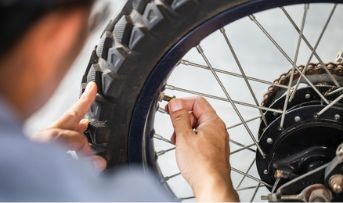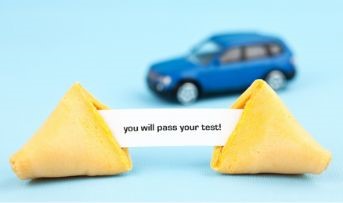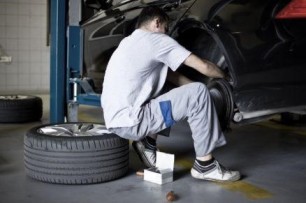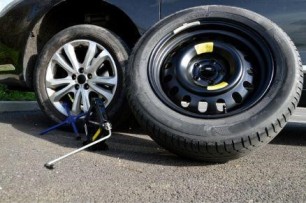General Insurance Blogs, Articles & Updates by - Magma HDI
Have us call you
- RENEW YOUR POLICY
- BUY NEW POLICY

Group personal accident insurance is all you need to protect yourself against the financial distress of disabilities
Human resources are the greatest asset for any company. A good workforce can make or break a company. Companies often offer group personal accident insurance to protect their workforce from the loss of income from any kind of accident and related disability or death. The employees feel protected against financial uncertainties of work-related hazards with such insurance. It benefits employees working in heavy industries with dangerous machinery and surroundings.
Group personal accident insurance India is an effective way for employers to attract and retain talent. As an employee, it offers protection against the financial distress of disabilities and supplements your existing insurance covers. Let us know more about it.
1. Coverage:
Group personal accident insurance provides comprehensive coverage to an entire group against accidental disability and even death. Policies are customisable according to the number of people in the group and their specific needs. Hence, you can be reassured if your group is too large or small. Such policies provide discounts on a higher number of members in the group.
● Permanent total disability – Insurance companies will pay you the total sum insured in case of permanent total disability such as loss of leg, limb, eyesight, etc.
● Permanent partial disability –You are eligible to get up to 50% of the total sum insured in case of permanent partial disability, such as loss of one foot, loss of hearing, damage to eyesight, etc.
● Temporary total disability – You will get a certain percentage of the total sum insured in case of temporary total disability from an accident, depending upon your policy terms and conditions.
● Medical care – The policy will also cover your medical expenses, even if you are admitted for one day in a daycare treatment. Moreover, it will also cover your cost of OPD treatment, physiotherapy sessions, and ambulance transportation.
● Education – Some policies also come with an education add-on cover. The insurance company will take care of the education expenses of up to two dependent children in case of the insured person's death.
2. Need and importance:
Several industries require their employees to work on heavy machinery and risky surroundings, including the iron and steel industry, automobiles, pharmaceuticals, etc. A work-related accident can cause temporary or permanent disability, causing a financial crisis and a lot of trouble for the employees and their families.
So, if you are an industry employee, group personal accident insurance India covers you against such unfortunate accidents. It takes care of the hefty hospital bills for your treatment up to the limit of the policy amount. It also provides financial assistance to the nominee in case of the policy holder's demise.
Therefore, such a policy will give you peace of mind and protect you against the monetary distress of disability or death, allowing you to work stress-free with greater efficiency. It also helps build trust with your employer and strengthens professional ties for a long time.
3. Exclusions:
Group personal accident insurance India does not cover pre-existing diseases when purchasing the policy, self-inflicted injuries such as a suicide attempt, mental disorders, non-accidental medical treatments, hospitalisation due to substance abuse, criminal activities, or war. Ensure to read the terms and conditions of the policy to know more about the details. You may contact your employer or the insurance company if you've any queries regarding your coverage.
Group personal accident insurance India offers coverage that regular health insurance policy does not provide and also compensates the nominee with a lump sum payment in the unfortunate event of disability or death due to an accident. This can be a great financial support to your dependent family members.
Choose the best personal accident insurance India to provide complete coverage, support, and protection during the time of need.
Click HERE to buy personal accident insurance India policy.
Disclaimer: The information provided above is for illustrative purposes only. To get more details, please refer to policy wordings and prospectus before purchasing a policy.

Here are a few tips for skincare in older adults
Even if you've taken exceptional care of your skin throughout the years, it still ages. The youthful flush eventually disappears and the indications of ageing, such as brown spots, wrinkles, more frequent bruises, and dryness, start to be evident.
Your skin can convey your mood and show how healthy or unhealthy you are. As you age, taking care of your crucial outer self is important. For elders, here are some skincare suggestions.
Why does your skin alter as you age?
Skin changes brought on by ageing are typical and include a combination of the following:
● Allergies
● Weather
● Genetics
● Nutrition
● UV exposure
● Smoking is, among other things
The most harmful of these to the skin is continuous and direct exposure to the sun. According to research, among the people having skin illnesses, nearly 80% had one or more skin conditions requiring treatment or medical attention.
If you're an older adult, here are a few best skin care tips for you to enjoy a youthful and glowing skin.
1. Frequently moisturise your skin:
Emollients and fatty acids are combined in the best moisturisers to resemble the skin's natural lipids. Choosing an occlusive moisturiser can help you to build a barrier that will trap moisture in your skin and reduce water loss.
TIP: Always rub face moisturiser in upward strokes, never down. Apply a high-quality moisturiser to the skin after a bath to lock in moisture.
2. Wash gently:
With limited natural oil production, mature skin is extremely dry. Cleanse gently to prevent further drying out. It's okay to wash once per day. Use gentle cleaners as opposed to harsh soaps and alcohol-based products.
TIP: When washing, use warm water rather than hot and limit the number of baths or showers you take. If you enjoy unwinding in the tub, stay away from bath oils because they make the tub slippery and increase the chance of falling.
3. Eat right for gorgeous skin:
The saying "you are what you eat" has never been more accurate if you want skin that glows. Our skin's health is significantly influenced by our diet, which should be balanced and high in nutrients, vitamins, antioxidants, and necessary minerals. Include berries, melons, avocados, walnuts, oily seafood like salmon, and green vegetables. These items are a part of a healthy diet that can support maintaining healthy skin as you age.
4. Do maintain a simple, consistent routine:
Dermatologists advise simplifying skincare regimens. Irritation can result from excessive scrubbing, exfoliating, and product use.
TIP: As a general rule, use sunscreen, a cleanser, and a moisturiser, as these are the only three items that will make a consistent visible difference.
5. Avoid the sun:
This is the most crucial thing you can do for your skin! Dermatologists advise you to shield yourself from the sun's damaging rays.
● To protect your face and any other exposed skin, use a broad-spectrum, water-resistant sunscreen with an SPF of 30 or higher.
● When spending time outdoors, look for cover because the sun's rays are most intense between 10 a.m. and 3 p.m.
6. Drink water to rehydrate:
Never undervalue the importance of water or the benefits that staying hydrated may have on your skin and general well-being. Drinking water can give you radiant and clear skin.
Inner beauty begins with the skin. No matter how much money you spend on anti-aging therapies, poor health can manifest in your skin's appearance. Keep up a healthy lifestyle, and pursue your passions. After all, ageing is a natural process that includes wrinkles, fine lines, and age spots. Be proud to wear them!
Enjoy your retirement life with wholesome meals, daily and different exercise groups, and regular health and wellness events. Also, invest in the best health insurance in India for parents to secure your finances from uncapped medical expenses due to ageing.
Click HERE to buy the best health insurance in India for parents.
Disclaimer: The information provided above is for illustrative purposes only. To get more details, please refer to policy wordings and prospectus before purchasing a policy.

Get your tyres checked if you hear screeches regularly
The engine is often considered a two-wheeler's most crucial component. However, an experienced motorcyclist would tell you that well-maintained tyres are equally essential for a safe and enjoyable bike ride.
The various squeaks, screeches, and rumbles can tell you about a tyre's health. Since your contact with the road is made via tyres, they have a crucial role in defining your riding experience. Taking optimum care of your bike's tyres ensures longevity and a smooth ride. Buy 2 wheeler insurance online and get your bike serviced regularly to maintain your bike's safety.
Do tyres always make noise?
You cannot completely eliminate noise from your tyres. The rubber will make noise as it rolls against any surface. Natural rubber friction against the road will be the source of most of the noise your tyres make. Also, air flow through the moving tyre treads further increases the noise.
On the road, the sounds made by various tyre brands and products vary slightly. The sounds your tyres generate have a language, but translating them takes practice.
Let's now understand different screeches and how to care for them.
1. Squealing tyres:
The possibility of tyre squealing exists, especially while making sharp turns. You can hear this frequently in parking lots. Your front tyres may be underinflated if they appear to be making this squealing noise. You should check their pressure even if the tyres don't appear underinflated.
2. Squeaking tyres:
You need to pay immediate attention if your tyre makes a squeaking noise. Compared to a screech, it's riskier. The front tyres typically exhibit uneven tread wear, which a screech can indicate. You may feel some pulling to the left or right. Go to the tyre shop right away to have your wheels balanced, aligned, and tyres checked.
3. Grinding tyres:
The time to be afraid has come if you hear your wheels grinding. The most likely reason is your brakes' failure due to worn drums or pads. Get your two-wheeler inspected right away, wherever you are.
4. Rumbling and vibrating tyres:
Your tyres may rattle and tremble on some road surfaces, particularly ribbed ones. A worn wheel bearing may be indicated by rumbling and vibration from your tyres, especially if the noise gets louder as you go faster. It is a significant cause for worry since the wheel bearing holds the wheel in place.
Whether you are turning swiftly or braking hard to halt quickly, screeching tyres are to be expected. Low tread depth may be the issue, which you can resolve by taking your 2-wheeler to a tyre shop.
Dealing with unidentifiable sounds:
Sometimes you instinctively know something isn't right after riding on a pair of tyres for a while. When you hear a noise, you might not be able to place it in a certain category or even identify it, but you get the impression that it doesn't sound right. This might even happen if you stumble over a pothole. Other reasons might be the low tyre pressure, the tread may have worn down, or your bike's wheel may have fallen out of alignment.
Remember to pay attention to tyre sounds. Take a conservative approach if you are unsure of what it signifies. Check the two-wheeler and the tyres. Safety is the utmost priority for any rider on the road. The easiest way to prevent mishaps is to pay attention to your bike, regularly get it serviced, and purchase 2 wheeler insurance online as a prudent safety cover.
Click HERE to buy 2 wheeler insurance online.
Disclaimer: The information provided above is for illustrative purposes only. To get more details, please refer to policy wordings and prospectus before purchasing a policy.

Here are a few home remedies to treat psoriasis
Your body is a temple, and you must take care of it to ensure your physical, mental, and emotional well-being. However, certain conditions can take longer to cure, and their development or progression varies from person to person. One such condition is psoriasis.
If you are new to this term, let us explain psoriasis. It is a disease of the skin, which manifests itself by creating a rash with itchy and scaly spots and patches, usually on the elbows, knees, scalp, and trunk of your body. This inflammation in the skin caused by psoriasis is an autoimmune condition, and there is no single method to treat it. As every instance of psoriasis differs from the next, the treatment prescribed by dermatologists also differs.
This blog will shed more light on these treatments and the few home remedies to treat psoriasis.
1. Aloe vera to the rescue:
Aloe vera is believed to be very beneficial for managing your psoriasis and calming the inflammation of your skin. And the best part? It is readily available and hassle-free if you want to grow aloe vera in your home premises organically. If you are using aloe-vera infused creams, it is medically recommended that you use the ones with 0.5% aloe vera and apply it three times a day to treat the discolouration, rash, itching, and scales on your skin.
2. Warm water to cleanse:
Who doesn't like warm water baths? The soothing water at the right temperature falls on your skin, relaxing your body. But there is a disclaimer! You must strictly avoid "hot" water. It might not be helpful with the inflammation of the skin due to your psoriasis condition. Warm water is advised. You can add mineral oil, Epsom salt, or olive oil to help with the rashes and itchiness.
But you must be careful about specific things to avoid triggering or worsening your symptoms. Some instructions include: showering once a day, a maximum of fifteen-minute bath, using a soft, moisturising soap bar, patting dry, and applying a skin-friendly moisturiser post-shower.
3. The household's favourite – turmeric:
Every Indian household's favourite ingredient for cooking or home remedies is turmeric. There have been many studies on the usage of turmeric and its benefits which have suggested fruitful results in using this age-old home remedy in Indian culture. Turmeric has anti-inflammatory abilities, which help rid psoriasis.
4. Omega-3 is essential:
Omega-3 is an essential component that helps to strengthen your body's immunity, prevents heart diseases, reduces the chances of stroke, acts as protection against cancer, and much more. The omega-3 fatty acids are believed to lower the inflammation levels of the skin in your body.
Other ways to help you manage your psoriasis include keeping your stress levels in check by meditating, journaling, aromatherapy, anxiety management (therapy), etc. It is also advised to monitor your body weight and control it if necessary. Living with psoriasis compromises your immune system, which makes you prone to other health issues. Therefore, maintaining a moderate body weight is essential.
It's high time that we all understand the significance of our health, especially after the pandemic. While you try your best to stay in optimal health, you must be ready for any health crisis that might come without warning. Therefore, you must get online health insurance to avoid such unforeseeable situations. Explore your options and purchase the best online health insurance that caters to your needs.
Click HERE to learn more about online health insurance.
Disclaimer: The information provided above is for illustrative purposes only. To get more details, please refer to policy wordings and prospectus before purchasing a policy.

Complete guide to become a professional driver
Driving a car can be one of the most joyous and liberating feelings in the world. Cruising through the roads, being in control and manoeuvring your vehicle is sure to give you a sense of euphoria. While many of us master the art of driving effortlessly within a short period, others might take a considerable amount. The important thing to remember is that developing driving skills is a matter of experience.
In this article, we will discuss a few ways to develop your driving abilities and become a skilled driver.
1. Understanding how your car works:
An expert driver should be able to manoeuvre every car. But as a start, before you can take your vehicle out, understand its mechanisms and how it responds to adverse weather conditions. This will help you manage your car better if presented with any circumstance that you have had no prior experience with.
2. Configure the mirrors:
Mirrors should perform their intended functions. Knowing what mirror angle works best for you is crucial. Set your mirrors so that the sides of the chassis are not visible anymore. Upon setting up the mirrors the right way, you can reduce the blind spots significantly.
3. Turn signals:
Many people often neglect to use the indicators. However, it is vital to understand that the turn signals are not for you. They alert other people behind or around you about your next move. Warning others will help reduce accidents or crashes on the road.
4. Keep a margin:
This might seem futile when you are traversing through slow-moving and congested traffic. However, leaving a margin between your vehicle and the vehicle ahead is necessary when you are driving fast on an empty road. This helps avoid potential crashes in case of a sudden brake by the person ahead of you. A thumb rule to follow is the 10-second rule. Keep a checkpoint for reference and note the time the vehicle ahead of you passes this point. Ensure that your vehicle follows with a gap of 10 seconds.
5. Be responsible towards others:
When talking about good driving skills, one of the most neglected factors is the responsibility towards others. Being empathetic towards others on the road is the trademark of a good driver. Unnecessary honking, not adhering to speed limits, not warning the other drivers, etc., can lead to agitation and even accidents. Being calm during such situations can go a long way.
6. Practice night driving:
Traversing through night traffic can be challenging the first few times. Instead of taking your car at night during heavy traffic hours, start practising on relatively empty roads to get comfortable with the headlights from the opposite vehicles. Understand the rules of alerting fellow drivers during the night and stick to them.
These are a few ways in which you can improve your driving skills. Being confident and practising adds to your experience and makes you a better driver. As a beginner, handling a 3000-pound motor can seem daunting. Keep in mind that being intimidated is entirely normal. Start with open grounds and slowly make your way into heavy traffic roads.
Another thing to consider is that sometimes, accidents might happen due to the negligence of fellow drivers or some unexpected situations. To help you rest easy, consider buying motor and personal accident insurance. Personal accident insurance covers all the expenses you will face in case of an accident and compensates for your losses.
Click HERE to know more about personal accident insurance India.
Disclaimer: The information provided above is for illustrative purposes only. To get more details, please refer to policy wordings and prospectus before purchasing a policy.

Best tips to overcome your driving test nerves
While buying a car is hectic and time-consuming, learning how to drive a vehicle is a different ball game. We all know that Indian roads are chaotic, and sadly, the strict implementation of traffic rules is lacking. People are ignorant of the traffic rules. The high number of vehicles on the road makes it difficult for the traffic police to control the cars and catch the ones breaking the regulations, thus encouraging the environment of neglect. New learners find it challenging to navigate the roads under such conditions and risk a massive chance of landing in or creating an accident or collision with other vehicles, poles, and bumpers if they are not extremely vigilant.
Considering the above reasons, it is imperative for any potential learner or driver must pass a driving test with good scores or grades to show their understanding and make them eligible for driving on the road.
This driving test examines a candidate based on a written and practical test. Both these tests are focused on your knowledge of the traffic rules and road conditions, situational risks and solutions to avoid any accidents, and a practical display of your driving skills catering to the tasks given by your examiner. This driving test is extensive and essential, which is why many test takers get nervous before the test.
Are you someone who gets the pre-exam jitters that makes you anxious about the upcoming test and interview? Well, do not worry. This blog has the best tips to overcome your driving test nerves. Here are a few tips to get you started.
1. Confidence is key:
It would be best if you assured yourself that you are ready. You have studied well for the test and practised your driving skills enough times to be confident that you will pass your test with flying colours. You need to be satisfied that you will not be able to take this test until and unless your driving instructor thinks you are ready. So, if you are applying for this examination, you must avoid hyping up the test and magnifying its importance to make yourself anxious. This test will examine your skills in something you have done many times already.
2. Do not tell everyone:
Avoid telling everyone that you are about to take your driving test. Keeping it a secret will help you avoid the millions of tips and techniques people will say to you, and various negative reviews you might come across will make you more nervous and break your confidence. Losing confidence is not something you can risk. So, avoid revealing your test dates and take the pressure off.
3. Never skip your meals:
Skipping your food and having anxiety about your performance on the test is not a favourable combination. It might make you weak or cause a panic attack, which will eventually force your examiner to declare you unfit for the test, and you might have to reapply and go through the hassle again. Therefore, have a light meal, like some fruits, salad, or something which is fulfilling and energetic and does not make you drowsy.
Some other tips to overcome your driving test nerves include:
● Using the washroom before you go in for the test
● Washing your face lightly to wean off the pressure
● Chatting with your driving instructor to create a normal atmosphere
● Not consuming caffeine for a couple of days before the test
● Consider the actual test to be a mock examination
● Carry a jacket in case the exam hall gets cold
● Avoid too much revising on the day of the test
● Arrive at the test centre well in advance to give yourself some time to calm down and understand the procedure of the test
These are some of the best tips to overcome your driving test nerves. Follow them righteously, and you will pass the test with ease. And while we talk about driving tests, we should discuss the necessity of purchasing car insurance too. After getting your driving licence, car insurance is the next essential document you need to drive a car legally. Compare new car insurance rates and consider other factors before buying a policy.
Click HERE to learn more about comparing new car insurance rates.
Disclaimer: The information provided above is for illustrative purposes only. To get more details, please refer to policy wordings and prospectus before purchasing a policy.

Follow these steps if you're concerned about the authenticity of your bike insurance
Hundreds of options are available for your bike insurance, both online and offline. You must have encountered tempting advertisements promising you the lowest premium with complete coverage for your bike. Also, we frequently receive calls from insurance companies or their agents with lucrative offers for buying our bike insurance from them.
But wait a moment. Are all these offers authentic? Will they provide you with complete protection, safety, and quick claim disbursal in the unfortunate event of your bike accident? You need to follow these steps if you have the slightest doubts and are concerned about the authenticity of your bike insurance.
1. Check with IRDAI:
The first step for checking the authenticity of your bike insurance is to check the website of IRDAI (Insurance Regulatory and Development Authority of India) and search for your insurance company. The insurance company will probably be a fraud if its name is not on the IRDAI website.
2. Go for a brand:
Always choose a bike insurance policy of a reputed company or brand. An insurance company that is well-known and reputed in the market is less likely to cheat and issue a policy with false claims and promises. Also, the chances of a fake policy from such companies are almost zero.
We often buy a bike insurance policy on the advice of an insurance agent or by getting influenced by some advertisement. You should first call the customer care of such companies and verify the policy details being sold to you. Also, you may visit the nearest branch of the company and verify the details there. Check whether the policy contains the same IDV (Insured Declared Value) and all the add-ons promised earlier to you. Buy the bike insurance policy only after you are certain about its genuineness.
3. Premium receipt and other details:
A genuine bike insurance policy will always issue a receipt for the premium paid by you. Also, the policy document will contain all the details, such as your name, policy tenure, terms and conditions of insurance coverage, etc.
To ensure the authenticity of your bike insurance, always insist on a hard copy of your premium receipt. Review your policy document thoroughly and ensure it contains all the required details.
4. Mode of premium payment:
A bike insurance company will give you several options to pay your bike insurance premium. You can pay it online through its website or issue a cheque in the insurance company's name and hand it over to the insurance company’s office or your insurance agent.
If your insurance company or agent is insisting only on cash payment or payment by cheque/bank transfer in the name of a person, it should be a red flag for you. The insurance company or the agent in between might not be genuine and authentic.
5. Verification link:
Insurance companies nowadays validate a bike insurance policy on their official portal at the time of issue. You can check the authenticity of your bike insurance policy by checking whether this link redirects you to the official website of the insurance company or not. This is especially important if you buy your policy from a 3rd party vendor.
The digitalisation of insurance services has contributed greatly to the progress and development of the insurance industry. However, fraudsters find new ways to dupe you while selling you a bike insurance policy. You need to be vigilant to protect your hard-earned money. Always verify the authenticity of your new bike insurance policy and its details before paying for it.
Bike insurance is compulsory under the law, and you must buy it from one source or another. Visit the nearest branch office of bike insurance companies, or go through their offerings in detail on their website. Call their customer care and confirm the details. Buy a good bike insurance policy that is genuine and does what it promises to do.
Click HERE to buy reliable bike insurance for your valuable two-wheeled asset.
Disclaimer: The information provided above is for illustrative purposes only. To get more details, please refer to policy wordings and prospectus before purchasing a policy.

These are the six best destinations to enjoy paragliding
Every one of us has once had a dream of flying. As kids, we have looked at birds and planes and wished for the ability to fly. Today, we have various ways to live this dream. Different adventure sports like sky diving, hang gliding, and paragliding have created opportunities where people can enjoy a safe yet thrilling experience of being in the air.
India proudly displays unique landforms, making it one of the most enjoyable places for such activities. Paragliders have referred to paragliding as one the most unforgettable experiences of their lives. Being up in the air and away from the ground is sure to be one of the most humbling experiences of your life.
Today we will look at a few places in India that offer this experience.
1. Bir Billing, Himachal Pradesh:
Situated near Kangra Valley, Bir is a beautiful village in Himachal Pradesh. It has over 11 paragliding options, giving it the name of the 'Paragliding capital of India'. Bir promises you the spectacular views of lush green mountains and the beautiful sunsets that paint the sky in all shades of orange.
2. Panchgani, Maharashtra:
Panchgani is a small hill station in Maharashtra that offers training as well as flying for all paragliding enthusiasts. The landscapes of Bilar, Khinger, and Tapola are arguably one of the best locations for flying. The best time to visit Panchgani is between November and February.
3. Arambol, Goa:
Goa is famous for its beaches, food, and party life. But Arambol promises priceless views of the Arabian Sea and beautiful arrays of palm trees. Choose the evenings for your paragliding adventure to watch the sunset while you sail over the blue waters reflecting its golden shine.
4. Nandi Hills, Karnataka:
Situated close to Bangalore, Nandi is the perfect place for adrenaline junkies, as many tourists choose it for camping, trekking, and paragliding. People here are mostly seen enjoying paragliding in the day and camping at night.
5. Gangtok, Sikkim:
The land of magic, monasteries, and mountains, Gangtok is a must-visit for anyone who wants to combine adventure and spirituality on their trip. Paragliding in Gangtok promises you a bird's eye view of the unexplored places in Sikkim and a beautiful view of the mighty Kanchenjunga.
6. Shillong, Meghalaya:
The Scotland of the east, Shillong, has a wide variety of flora and fauna. Paragliding here is sure to be a cathartic experience. Shillong is a canvas of dense, lush forests and beautiful waterfalls. Visit during the summer months to ensure the magnificent view that this palace has to offer.
These are a few of the best places in India that offer you a safe and fun paragliding experience. Over the years, adventure sports have become more prevalent in India. While well-trained and licensed professionals are always there to guide you through the process, invest a fair amount of time researching the best paragliders in the area to ensure maximum safety. Add to this a personal accident insurance policy to help you evade any expense that you might incur in case of an accident.
Click HERE to know more about personal accident insurance policy.
Disclaimer: The information provided above is for illustrative purposes only. To get more details, please refer to policy wordings and prospectus before purchasing a policy.

Best hacks for home buyers to purchase their dream home at the best price
Purchasing a home is a long, chaotic and hectic process. In addition to the budget, multiple other things come into consideration when you plan to buy a house. With several financial and real estate scams happening around, it becomes challenging to be decisive about purchasing a house. Several apps, real estate agencies, and brokers claim to help you find your dream space.
But how would you know if you are being scammed under the name of getting the best deal worked out “especially for you” or if you are getting the best price for your house? Do not worry. This blog lists the best hacks for home buyers to make them aware of what they need to know beforehand and purchase their dream home at the best price.
1. Talk to your bank:
There is a certain urge to move into your dream place. But before you get the ball rolling on your shifting, make sure that you communicate with your bank about getting a pre-approved loan. The bank must be ready to grant you the loan at a certain set rate. In addition, getting pre-approved from the bank also acts as a symbol of trust and confirmation for the agents and house sellers on your house deal.
2. Dig a little deep:
When you are looking into properties that are available for sale, be it a new construction or an old one, always investigate thoroughly. You should seek information on the reasons why the property is on sale.
And if the agent or the seller is in a hurry to sell the house, more often than you might predict, it could be a potential red flag which should lead you to dig a little deeper and see if you are willing to purchase that particular house or property. Only make your offer after you have all the details.
3. Be smart about your offers:
While low-balling on the prices is practised in our culture, it might get risky if the market on your property or potential dream home is competitive. You might lose the opportunity to negotiate further on your offer. So, gather some information on the comparable bids, do little calculations and come up with the best price in your first shot at the proposal.
4. Keep an eye out for the inspection:
You must be very vigilant about the inspection results when the home inspector comes and checks out the place. If your deal has been finalised and accepted and your home inspector finds any issue which can cause discomfort in the future, you need to get in touch with the seller as soon as possible.
Have a polite discussion with the agent or the seller to bear the repair charges or negotiate the price again to bring it down a little, keeping in mind the damages (this would be a wiser decision).
Some other tips include offering a quicker final decision/closing, negotiating respectfully, discussing the amenities in detail, and making yourself ready to compromise a little. These tips will prove handy to you when you go out looking for your future home.
We hope the blog was helpful and gave you the information you wanted. While we are on the subject of buying homes, it is essential that you also look into the home insurance option in advance to avoid the hassle of piling things up for the end. Purchasing the best home insurance policy in India will help you protect your home and your family from unfortunate circumstances and avoid monetary stress during such times of distress.
Click HERE to learn more about how you can buy the best home insurance policy in India.
Disclaimer: The information provided above is for illustrative purposes only. To get more details, please refer to policy wordings and prospectus before purchasing a policy.

Best tips to clean the seat belts of the car
A significant issue prevailing in the minds of drivers and car commuters while driving on the roads is their safety. You should drive safely to avoid the chance of any mishap, as it is rightly said that precaution is better than cure. Wearing seat belts while driving is crucial to lessen the impact of accidents if ever you meet with one. Cars today have mandatory regulations and systems about wearing your seat belts. Many vehicles have alert signs and sounds that do not stop until the driver and the co-passenger have put on their seat belts.
Different types of people might sit in your car. Sometimes, kids might wipe their hands or gnaw on the seat belts, getting them dirty. The dirt and dust might affect the material, and they could begin to smell or have developing infectious germs.
Do you want to clean your seatbelts but find it complex and confusing to figure out how and what ingredients to use? Don't worry. This blog discusses some of the best tips to clean your car's seat belts.
1. Separate the parts:
To clean the seat belts properly, calmly separate the parts without damaging them. You can remove the buckles and other buttons using a screwdriver. Separating the components makes it easier to access the stains or dirty areas and work to make them clean.
2. Pull:
It would be best to pull out the seat belt entirely until it becomes stiff and cannot be pulled anymore. This will ensure a thorough inspection and cleaning.
3. Clip it up:
You can use clamps or paper clips to ensure that the seat belt does not retract back. This helps in easier accessibility during the cleaning process. You can place the clamp near the reel (where the rest of the seatbelt part is stored).
4. Inspect for corrosion:
The steel portions of the seat belt can rust over time. You can use steel wool to polish the steel buckle of the seatbelt.
5. Identify the dirtiest spots:
Use a degreaser and spray it to identify the stains on the seatbelts. After identifying the spots, you can clean them softly, avoiding the risks of damaging the material of the belts.
6. Materials you should use:
Do not use sharp objects for a light dusting of the seatbelts. It may damage the materials causing the seat belts to wear out. Microfiber cloths are your best option for dusting or wiping the seat belts after a proper cleanup using water and detergent.
7. Recommended ingredients for thorough cleaning:
Make a water mixture with distilled vinegar and dish soap (liquid). Vinegar has antibacterial properties and eliminates foul odour. Dish soap cleans the stains and spots gently of the seat belt. The mixture prevents the possibility of bacteria and moulds.
8. Dry the belts:
Let the belt dry before letting it retract back into the reel. If the belt stays wet, it can cause fungus development on the material, leading to infection, bad smells, etc. Leave the car open and let the seat belts dry.
You can use a brush with tiny stiff bristles to remove the stains and sweat spots that require deep cleaning for removal.
Along with cleaning the seat belts and maintaining other parts of your car, a wise option would be to be prepared for unprecedented circumstances. While you can control the cleaning and maintenance process, the possibilities of mishaps are not under anyone's control.
It is wise to stay monetarily stress-free by exploring your options and purchasing car insurance India. Car insurance is a wise investment that can guarantee you healthy returns during emergencies. Understand your requirements and accordingly browse and choose a plan offering the best benefits with a reasonable premium.
Click HERE to know more about how you can buy car insurance India.
Disclaimer: The information provided above is for illustrative purposes only. To get more details, please refer to policy wordings and prospectus before purchasing a policy.

A detailed guide on how plumbing works at home
When we say “water is life”, it is more a reality than a necessity. A day without running water in the pipelines of our house can be torturous, as we will not be able to take baths, use the washrooms or cook. This is where our home’s plumbing system plays a crucial role.
A plumbing system in any house is usually very complex. It is beneath the floors or hidden behind the walls. Hence, any fault associated with it cannot be repaired easily without damaging the walls or the floor. Therefore, it is vital to understand the plumbing network and how it works at home.
Main components:
The main components of the plumbing system are supply, drainage, and venting. These components help to separate the potable water from the wastewater. This ensures that we get fresh water for personal consumption while the wastewater is thrown away through the drainage system.
Modus operandi:
The water supply system in our home works with the help of water pressure. Good water pressure is essential for the free and uninterrupted flow of water in all taps and showers in our home. Pressure carries the water from the tank or source of supply to the kitchen, bathroom, or wherever we need it. The water supply system functions with the help of pipes, valves, faucets, and plumbing fittings.
The drainage system works by using gravitational force. The drainage pipes are downward sloping to direct the wastewater to the sewage line or the septic tank. This ensures that the wastewater does not flow back out of the drain and spoil your home.
Vents in the plumbing system are as important as the water supply and drainage systems. We can usually see these vents emerging from the roof of our house. They emit air into the drainage pipes, so the sewage gases do not mix in the drains. This air ensures that the traps in the drains do not open, and the entire plumbing system does not get contaminated and malfunction.
Hot water:
Getting hot water through your taps adds an extra step in the journey of the cold water. The cold water first flows to the electric geyser or natural gas water heater. If you plan to install the geyser in or near your bathroom, it involves laying off a few extra pipes through which cold water will reach the geyser, and hot water will flow back to the taps, faucets, or the kitchen.
However, if you plan to install a bigger water heater on your terrace, such as a solar-panel-enabled water heater, you must plan the plumbing system properly. It will involve a complex network of pipes that will take the cold water to the heating system and distribute it back into your home.
Supply shut-offs:
Nowadays, homes are equipped with individual supply shut-offs for freshwater in every bathroom, kitchen, or balconies and washing area. We need to simply shut off the respective valve where we are planning repair work. All individuals at home should also be aware of the main shut-off valve so that anyone can restrict the water supply to the entire house in case of any emergency or malfunction.
We only realise the importance of a good plumbing system at home when it malfunctions and needs repair. As we use this system hundreds of times daily, we must ensure it is top-quality.
Similarly, we need to ensure a good home insurance policy that takes care of our house and well-being by protecting it against damages arising from theft, fire, earthquakes, etc. We accept the importance of a home insurance policy only when the actual damage occurs. So why wait for such instances? Go for the best home insurance in India and keep your worries aside.
Click HERE to buy the best home insurance in India.
Disclaimer: The information provided above is for illustrative purposes only. To get more details, please refer to policy wordings and prospectus before purchasing a policy.

Let's understand the possible reasons for brake failures in cars
Failure of brakes can be a terrifying experience for drivers and have life-threatening consequences. According to statistics, a significant number of road accidents occur due to failed brakes. But how can you avoid such mishaps?
Apart from getting your car checked and serviced periodically, one way you can save it from landing in such grave situations is by being aware of the signs of brake failure.
This blog will discuss the possible reasons for brake failure in cars.
1. Brake cylinder:
A damaged or rusted brake cylinder is one of the leading causes of brake failure in cars. The brake cylinder's function is to compress the fluid. It consists of a fluid reservoir, which has a connected steel tube. There are higher chances of fluid leakage in the rusted pipe or the cylinder. This leakage can lead to brake failure.
2. Brake pad:
Brake fade is the term used for overheating of the brake pads. The overheating is caused due to excessive usage of the brake pads forcing them to become hard or fragile. Due to this, brake pads lessen their grip around the rotor or the disk, resulting in the car covering a certain distance before coming to a full halt when you press the brakes.
3. Overloading:
Overloading your vehicle can reduce the power of the brakes and potentially damage the braking system. You need to ensure that you follow the manufacturer's loading capacity to avoid the malfunction of the car's brakes.
4. Proper replacement:
Many people ignore the importance of changing the brake pads after some time. Brake pads can wear out due to excessive usage and lose their grip causing the brakes to fail. To avoid any risks, you must replace the brake pads and get the brake system thoroughly examined by a mechanic.
5. Moisture:
Moisture in the brake fluid can potentially damage the braking system. When the car runs, the liquid temperature rises, and the moisture (water droplets) becomes steam. The steam upon transmission can cause a brake system failure. Therefore, it is recommended to change your brake fluid after a certain period as instructed in the car manual.
6. Brake booster:
A brake booster magnifies the force you put on the pedal to push it. The failure of the brake booster can significantly lessen the maximum amount of power you need to slow down or halt your car.
7. Auto parts:
Using bad quality auto parts in your car is one of the worst decisions you can make. Their poor quality makes them unreliable and can lead to the failure of the brake system.
Other reasons which could lead to brake failure in cars could be damaged brake hoses, driving roughly through mud or water, issues with rotor disks, improper lubrication, etc.
Some other signs that indicate a brake failure:
• Issues with the brake pedal
• Dark brake fluid
• The braking system warning light is on
• The vehicle takes longer to halt
• Burning smell
• The car moves to one side when brakes are applied
• Grinding noises
That's a wrap on the discussion about some reasons for brake failure in cars. We all have understood the importance of keeping the vehicle in good condition. Unexpected brake failures can be a nightmare and lead to adverse consequences. It would be wise to undertake all the above possible reasons with severity and periodically examine your car's braking system.
Another way to safeguard your car against damages and accidents is by investing in car insurance. Review various plans and select the car insurance offering maximum coverage to your vehicle.
Click HERE to know more about best car insurance policy.
Disclaimer: The information provided above is for illustrative purposes only. To get more details, please refer to policy wordings and prospectus before purchasing a policy.

Before you buy your car, here’s all you need to know about ex-showroom and on-road prices
You have saved money for a long time to be able to finally buy your dream car and bring it home. It is a special feeling to give whatever it takes to turn your dream into a reality. However, you should know the various aspects of car buying in India. Before you consider buying a car, you need to understand the difference between the ex-showroom price and the on-road price.
If you don't know what these two terms mean, this article will help you. You will be familiarised with everything that can determine your car's price and help you consider all these parameters before you invest money in a car.
*pro-tip
You should always buy new car insurance for your car to keep it secure and take care of the expenses against any unforeseen accidents.
What is the Ex-showroom price?
The ex-showroom price is a price tag posted on various vehicles like cars or bikes in the showroom. It does not include road taxes, RTO registration, insurance, etc.
To understand the price at the ex-showroom, you need to know that:
● The ex-showroom price is the price you see being advertised on television, the internet, and on the car manufacturer’s website and brochures.
● You need to pay the additional amount for road tax, the registration fee for RTO, and insurance before you own a car. If you do not, you can be charged with a variety of penalties or challans in India.
● The price displayed as the ex-showroom price includes GST, ex-factory cost, and profit margins.
What is the On-road price?
The on-road price of a vehicle refers to the total price you pay to start driving the vehicle on the road. Simply buying the vehicle from the showroom is not enough. You must pay for several other things if you legally want to drive your car in India.
Some important things to consider under the on-road price are:
● It includes a variety of prices like ex-showroom price, registration fee, road tax, and insurance policy, among others.
● If you need any new accessories, they will also be added to your final bill with applicable taxes.
Difference between On-Road and Ex-Showroom price:
1. The ex-showroom price is the price tag excluding other factors like tax, insurance, and registration fee. The on-road price uses all the additional charges: life insurance policy, road tax, registration fee of RTO, and so on.
2. The ex-showroom price does not justify the final price of your car. You need to pay a lot of additional costs. On the other hand, the on-road price is the final price of a vehicle. You need not pay additional costs.
This gives you enough insight into how the car is priced at the showrooms. The price you see on the internet is clickbait to lure you into buying the car. You should be fully aware of the on-road price of a car before you buy it. This will help you analyse your budget better and prevent you from going overboard with your decision. You should also buy new car insurance that gives the best insurance coverage against any mishaps.
Click HERE to buy new car insurance to safeguard your valuable asset.
Disclaimer: The information provided above is for illustrative purposes only. To get more details, please refer to policy wordings and prospectus before purchasing a policy.

Six tips for choosing the right auto repair shop
Owning an automobile is one of the most rewarding things in life. Going on long road trips, midnight drives, or simply commuting between your office and home, having your own vehicle is sure to make you happy. But like everything, this also comes with its set of challenges. Zeroing down on the best car insurance company in India, and choosing the right auto repair service are just a few of the many things that need your attention.
Selecting an auto repair shop is not only about the care that your car gets but also about the rates, reviews, customer service, and overall experience. It is a good idea to look for options even before your automobile faces any issue so that you already know where to go. Let's look at a few ways to select a reliable auto repair shop.
1. Experience:
Your car's relationship is with the mechanic, not the company. Look at customer reviews online and get to know the mechanic who will be working on your vehicle. Having an experienced mechanic allows you to have peace of mind.
2. Company-specific service provider:
Repair shops that specialise in specific companies have more hands-on training with upgraded instruments and tools. So, it is best to go to a service provider who deals with the same company as you.
3. Online reviews:
Online reviews are a great way to understand the history of the company. More often than not, people tend to leave reviews of bad experiences they have had with the company. Keep in mind that not all companies have a 5-star rating. So going by the reviews and personal entries, you can make an informed decision about what kind of service you require.
4. Estimate pricing:
Solely depending on your car servicing agent might not be a good idea. Asking around in various service centres and mechanic shops, online rates, etc., can be an excellent way to estimate the money you might have to shell out during or after the process.
5. Warranties:
Ask your mechanic about warranties on different parts. This time frame varies from place to place. Having a good warranty period is crucial to ensure better car performance. A warranty ensures that you get a replacement free of cost.
6. Off-site services:
Sometimes, your car can break down during your journey. Under these circumstances, having your service provider's support will make it easier to avoid further damage. Before signing up for the services, talk to the staff and understand if they are willing to service your vehicle outside of the service centre. Having this added benefit goes a long way and ensures the credibility of your repair shop.
You need to keep these points in mind while choosing your repair shop. Having the right mechanic work on your car is a boon for you and your vehicle. Poor servicing can lead to poor performance and be costly in the longer run. To save yourself from the extra expenditure, it is an excellent option to first look for the best car insurance company in India. Car insurance can offer a bundle of exclusive benefits useful during unexpected mishaps.
Click HERE to know more about the best car insurance company in India.
Disclaimer: The information provided above is for illustrative purposes only. To get more details, please refer to policy wordings and prospectus before purchasing a policy.

Practice these care tips to keep your car's tyres and rims in good condition
A car has become more of a need than a luxury in recent times. It makes commuting and travelling highly convenient. People invest their time, effort and capital while purchasing a car to ensure it is to their liking while meeting their requirements. Many factors influence their purchase, like the model, budget, convenience, features, etc.
Taking care of your vehicle is crucial. You need to ensure that your car is regularly maintained, cleaned and goes for servicing periodically, as instructed. Always use authentic auto spare parts and follow all the service standards recommended by the manufacturer.
There are also chances that many exterior parts might get damaged due to extensive use of the vehicle. The wheels face maximum wear and tear due to constant friction. Practice these care tips to keep your car’s tyres and rims in good condition.
1. Pressure:
It is essential to check the air pressure of your car’s tyres, preferably before you start driving. Suppose the pressure is below the recommended limit, then there is a considerable danger of a blowout that might disbalance your car. This condition can wreak havoc on your driving and risk your safety. In addition to this, low pressure also reduces your vehicle’s efficiency, mileage and affects the life of the tyres.
2. Inspection:
You need to deeply examine your vehicle’s tyres for unusual wear and tears, cuts, punctures or other damages. Get the car checked by an expert for repair or replacement if needed. In case of a puncture, replace the tyre with a spare until you get to a service centre and have it inspected by a mechanic thoroughly. Call a professional if you’re stuck with a damaged tyre in the middle of a long-distance road trip.
3. Rotation:
Maintain a rotational routine of your car tyres to ensure an even balance of tread wear. Ensure proper examination of the tyres by a professional during the rotation procedure. They can help you determine early or late wearing down and find the reason to save you from any further risks.
4. Curbs:
Bumping into or driving close to the curbs can damage or bend the rims. Try practising parallel parking with cones or other items that will not scrape off your rims if you bump into them.
5. Properly clean up:
Use standard quality products and cloth materials to clean the rims of the wheels. You can risk corrosion of the metallic coats and cause damage to the alloys if you use acid-based cleaners. Use a gentle soap and water mixture and rub firmly to make the rims shine.
6. Alignment:
Misaligned wheels can lead them to wear out unevenly. This ultimately causes loss of control, reduces their strength, and amplifies fuel consumption, reducing efficiency. Get your alignment adjusted whenever you get your car inspected by a mechanic.
Other tips to keep tyres and rims in good condition include maintaining good driving practices, avoiding overloading your car, inspecting the tread depth, ensuring that the spare tyre is in perfect state, accurate wheel balance, etc.
We covered one crucial aspect about taking proper care of your car. But to avoid any severe damages and monetary stress due to unprecedented circumstances, it is wise to get your vehicle insured. Purchase car insurance that caters to your needs and safeguards your vehicle from damages and financial loss.
Click HERE to know more about car insurance.
Disclaimer: The information provided above is for illustrative purposes only. To get more details, please refer to policy wordings and prospectus before purchasing a policy.

A complete guide on hamstring injuries and the best ways to get relief
While YOLO (You Only Live Once) can be the mantra for many of us to enjoy and create beautiful memories, it is also important to remember that accidents come without warning. The slightest of injuries can make your life uncomfortable to an unimaginable extent. You can never be too cautious, and it does not harm to be careful and vigilant about the body against the potential dangers in the surroundings.
This blog is a complete guide on hamstring injuries and the best ways to get relief. If you are someone who has no information about hamstring injuries, their diagnosis, recommended treatments, symptoms, and causes, do not worry. Here we answer all your questions about hamstring injuries right from the meaning. So, without any further delay, let’s get started!
1. What is a hamstring injury:
Often, you might have noticed athletes and people who are into fitness and go to the gym regularly get their muscles pulled. A strain or a tear in the muscles or tendons in the backward portion of your thigh is described as a hamstring injury.
Athletes, gymnasts, and sportspeople who practice long jumps, high jumps, climbing, etc., are usually at risk of these hamstring injuries, which can make movement and daily chores and practice very difficult for them. In some cases, the severity of the damage and the induced pain can lead to getting disqualified from the competition or complete bed rest.
2. Let’s learn a little more about hamstring:
The hamstring joins the bone and the largest thigh muscle in your body and helps the leg bend and stretch easily. When you jump, climb a rope, jump, stretch, run or sprint, your hamstrings are used extensively.
The level of the injury is described by the extent of damage caused to the hamstring. A grade one injury involves a slight muscle pull, whereas a grade two injury indicates a partial muscle tear. The most severe grade three injury occurs when there is a complete muscle tear.
Note: if someone has suffered a hamstring injury, it makes them prone to it in the future if they do not take proper care.
3. How is the hamstring damaged:
The causes include overstretching, lack of rest combined with fatigue after a heavy workout session, a direct hit on your thigh, insufficient warm-up before athletic and sports activities or workouts, lack of a pre-conditioning program, and a history of hamstring injuries.
4. What are the symptoms:
You need to be aware of the symptoms of different grades of hamstring injuries (as discussed in the second point). If you have a grade one injury, you will experience sudden increasing pain in the backward portion of your thigh, leading to difficulty in movement. In this stage, your leg strength will remain unaffected.
If you have a grade two injury, you will experience some inflammation, redness, swelling, soreness, bruise patches, and a decrease in the strength of your leg. A grade three injury will worsen the pain, inflammation, swelling, bruise marks, and tenderness. A popping sensation occurs when you initially injure the hamstring.
5. Best ways to get relief:
The RICE method: rest, ice, compression, and elevation are essential to help you manage the injury and get relief from the pain and the soreness in your hamstring. Avoid excessive movement till the soreness goes away and the swelling goes down. Ice the area at fifteen-minute intervals for the next day or two.
A thigh sleeve (elastic, preferably) or a compression wrap is a wise choice to help support the area during the slightest movement. Subtle exercises like lifting your leg to a comfortable level while sitting on a chair or the edge of the bed help during the icing intervals. Crutches are advised if the movement is unbearably painful.
You must be careful and take the required measures to be watchful about your body. It is also wise to get personal accident insurance to avoid monetary stress in times of difficulty. You can explore all your options and purchase the best personal accident insurance online which suits your requirements.
Click HERE to learn more about buying personal accident insurance online.
Disclaimer: The information provided above is for illustrative purposes only. To get more details, please refer to policy wordings and prospectus before purchasing a policy.

Get rapid relief from sore throat with these natural remedies
Waking up with a sore throat can be worse than waking up from a nightmare. Every time you gulp your food or cough feels like sheer torture. On most days, the sore throat may vanish if you drink enough warm liquids, but sometimes it can take days to heal.
The pain and itch in the throat can be troublesome enough to distract you from your day’s routine and cause constant discomfort. There can be several causes for a sore throat like viral and bacterial infections, acid reflux, etc. While taking medicine for these illnesses is an effective way of getting rid of soreness, it may still take time to give you some comfort.
Antibiotics can take days to help, and if you have an important meeting to attend, you may be in for some trouble. Worry not; here are a few helpful natural remedies that can give you instant relief from a prolonged sore throat!
1. Saltwater gargles:
Gargling with salt mixed in warm water is one of the best and quickest remedies to relieve a sore throat. If an infection or inflammation causes your sore throat, warm salt water can help kill the bacteria present in the throat and reduce any inflammation.
Mix half a spoon of salt in a glass of warm water and gargle for at least 10 minutes. This will instantly kill any germs present, soothe irritation and calm swelling or inflammation.
2. Honey and Lemon:
Honey has antibacterial properties, which significantly reduces inflammation and soothes your throat. Lemon juice contains vitamin C to boost your immunity, break down the mucus and help you fight your infection. Add one spoon of lemon juice and two spoons of honey to warm water or tea and sip on it as a soothing concoction to get pain relief in a matter of minutes.
3. Chamomile or herbal tea:
Our ancestors have used herbal teas for ages knowing their medicinal properties. Chamomile or herbal tea has antioxidant properties that instantly calm inflammation and kill germs. Drink a cup of hot chamomile tea to soothe your throat from itching. You can add ingredients like turmeric to the tea to boost your immune system.
4. Steam inhalation
Steam inhalation is the best way to relieve your blocked sinuses, kill germs present in your nasal and throat cavity and clear the throat. It also helps you expel all the phlegm that may be causing congestion or soreness in your throat. Boil a pot of water and inhale through your nose and mouth to instantly relieve your sinuses. Continue this for a good 15 minutes to calm your irritable throat.
5. Cough syrup and lozenges:
While doctors usually prescribe cough syrups to fight infections, you can also use them to soothe your throat. Cough syrups have soothing anti-inflammatory properties that act not only on the infection but also on the inflammation in the throat.
You can also chew on lozenges containing ingredients like gingers, honey, lemon and peppermint to produce enough saliva that prevents your throat from drying out. This ultimately soothes your sore throat.
While you can simply buy online health insurance and ensure a safe future for you and your family, dealing with constant health ailments can be vexing. These few quick home remedies can give you rapid relief from a common cold or sore throat to make your daily life simpler! Try practising mindful activities like yoga, meditation, and pranayam to keep your body in the best shape possible and promote a healthy lifestyle.
Click HERE to buy online health insurance.
Disclaimer: The information provided above is for illustrative purposes only. To get more details, please refer to policy wordings and prospectus before purchasing a policy.

Best tips for uphill bicycle riding
Cycling has seen an increased number of enthusiasts over the past couple of years. Fitness lovers found a new way to keep themselves fit by cycling to the public parks as an alternative to the gyms. Cycling is an activity that does not require a lot of skill and techniques. Still, if you want to learn more about cycling as a sport or wish to venture into various terrains on your bicycle, there are a few things that you should keep in mind to make the process easier and more enjoyable.
One of the most challenging parts of cycling is traversing uphill roads. It is both exhausting and time taking. But with the proper techniques, you can easily manoeuvre this route.
Today we will discuss a few ways to make your uphill journey on the bicycle easier.
1. Do not start fast:
Many riders make the mistake of starting fast, right at the bottom of the uphill journey. This can be the first mistake that you make while riding uphill. Depending on the ascend and the steepness of the slope, it is best to distribute your energy and utilise it on the last leg of the peak. The final portion of the rise requires the maximum energy as it is the steepest part of the ascend.
2. Alternate between sitting and standing position:
Alternating between these two positions can help you significantly in manoeuvring the climb. Cover the distance while being seated and as you reach the final climb, stand up to increase the energy and to acquire the desired push. Activate your muscles, lift your body, and apply pressure using your legs to pedal heavily.
3. Finding a rhythm:
For longer climbs, it is best to set a riding pattern. As mentioned above, switching between speeds, positions etc., can help you form a rhythm and help you focus your energy more on riding instead of ascending.
Find a rhythm that works for you. Gasping is a sign of wrong techniques and wasted energy. For more extended periods of time on the ascend, your breathing should be deep constant.
4. Set small milestones:
Conquering the peak in one go can be a daunting task. Instead of looking at it as a mammoth assignment, it is best to set smaller goals instead. While making the climb, take note of the small details on the road. Like a post box, garbage bin or a tree. Setting these small goals can be an incentive for you.
You can associate these goals with rewards, such as after you reach a goal, you can change your pace, try a new method or just stop for a bit. This way, the road becomes a journey and not a task.
5. Don’t fight the wind:
Fighting the wind is probably the worst thing a rider can do. Your overall speed and energy levels are massively affected by the wind and its direction. Fighting against the wind always means using up all your energy which you can use later for your ascend. Instead, go slow if the wind is against your riding direction.
Sparing sometime of your day for such physical activities can help you in the long run. However, excessive cycling can lead to injuries and a weaker immune system. Uphill riding is never an easy venture, and acing it requires fitness and determination.
In the process, you might even face injuries and mishaps. This is why it is essential to strike a balance. In case of an injury, doctors suggest various physiotherapy sessions and other medications. These treatments can burn a hole in your pocket; hence you should consider buying an individual personal accident insurance policy. Individual personal accident insurance policy safeguards you in case of accidents and injuries, and the cost incurred during your treatment.
So, keep your passion for cycling alive, and ride your way to fitness!
Click HERE to know more about individual personal accident insurance policy.
Disclaimer: The information provided above is for illustrative purposes only. To get more details, please refer to policy wordings and prospectus before purchasing a policy.

Understand these signs that show newborn illness and immediately act on them
Bringing home your newborn from the hospital is a wonderful yet challenging experience as a parent. The fear of the infant getting sick is a big worry. It takes time to understand typical infant behaviour and gauge abnormalities, which can be challenging.
Detecting initial signs of illness is crucial as it gets difficult for infants to fight off diseases that spread swiftly due to weak immune systems. Comparing family floater plans offered by online health insurance companies is an equally important step to consider to protect your baby.
Additionally, here are some symptoms of newborn illnesses to be aware of.
1. Consistent crying or irritability:
A baby can only communicate its needs by crying, be it hunger, tiredness, loneliness, a change of diaper, or discomfort. At first, you might not understand your baby's cries, but cancel out reasons to identify the cause. Consistent irritability and cries are signs of sickness.
2. Fever:
Bacterial and viral infections, including pneumonia, ear infections, stomach bugs, and urine infections, can cause a fever. Use a digital or mercury-free glass rectal thermometer to take your child's temperature. A temperature of up to 100 degrees is considered normal. For children younger than three months, a temperature of 100 degrees or more, and 101 degrees for children between 3 and 6 months is the threshold, after which you must immediately contact the doctor.
3. Apathy or laziness:
Being tired, dizzy, listless, or excessively sleepy without responding to sounds and sights or reduced appetite are gradual changes you may notice. Lethargy may be a symptom of an infection or other illnesses, like low blood sugar. If your infant shows fatigue or isn't as active as before, consult the doctor.
4. Little appetite:
Most babies eat every three to four hours after the first day, and they will typically express their hunger by sucking on their hands or fingers, screaming, or making yelling gestures with their hands or fingers. Contact your paediatrician if your infant refuses to eat and skips multiple feedings.
5. Vomiting and diarrhoea:
Intestinal, bacterial, or viral infections and obstructions can cause vomiting and diarrhoea. Regular examination of your baby's poop can help the doctor identify bacterial infections. The symptoms of viral infections generally go away after about a week without medication.
6. Inconsistent stools:
Your infant may lose excess fluids due to a fever, illness, or heat and have extremely dry stools. Once your baby begins eating solids, excessive consumption may cause constipation and the formation of firm stools due to difficulty in digestion.
7. Urination:
Typically, babies soil a minimum of four diapers daily. Excessive urination could be due to an infection or other urinary tract issues, such as distress while peeing. A pinkish stain on your baby's diaper indicates concentrated urine and is not worrisome—however, blood in its diaper or persisting discomfort requires a doctor's intervention.
Immediate steps of actions:
Caring for an infant is a significant responsibility that requires prior planning. We encourage to-be and new parents to compare infant insurance offered by online health insurance companies and prioritise their child's health.
Once you notice any symptoms persisting for long periods and deviations from typical behaviour, rush to the doctor. Ensure you follow the doctor's advice to nursing your child back to health. Additional preventive measures include:
● Introducing easy-to-digest foods
● Keeping a constant watch on your newborn
● Maintaining a clean environment
Dealing with kids is always a challenging task, especially when it comes to infants. Since they have weaker immune systems and cannot do things for themselves, it is the parent’s responsibility to make prior arrangements to provide the best possible environment for the infant to thrive in. You can start by including your infant in your family insurance plan after carefully considering the alternatives online health insurance companies offer.
Click HERE to buy insurance for infants from online health insurance companies.
Disclaimer: The information provided above is for illustrative purposes only. To get more details, please refer to policy wordings and prospectus before purchasing a policy.

Know more about the long term effects of using cosmetics
Cosmetics have become an integral part of our daily lifestyle. Facial makeup, perfumes, nail polishes, eye makeup, hair colours, etc., all enhance our physical attributes and appearances. The cosmetics market has developed various products for different cultures, skin tones, types, and seasons.
While these products may accentuate your physical features and give you a sense of confidence, they can be harmful in the long run. The high chemical contents present in cosmetics can be toxic to your skin. Often, the side effects of these chemical ingredients are not mentioned on the packaging.
The harsh chemicals in cosmetic products can affect the functioning of your skin's protective barrier, making it significantly easier for pathogens to enter your skin. Regular usage of makeup can hurt your skin's glow.
This article will discuss the long-term side effects of using cosmetics. You need to be aware of these consequences to be vigilant about the ingredients and the usage of cosmetic products.
1. Ageing:
One of the worst things you can do to your skin is to apply makeup without sunscreen. When you expose your skin to the sun, it damages your skin and leads to premature ageing signs like wrinkles, age spots, and fine lines. Also, make sure that you remove your makeup before calling it a night; otherwise, it can get into your pores and break the elastin, thus causing wrinkles.
2. Cancer:
Many cosmetic products like waterproof mascaras, foundations and long-lasting liquid lipsticks contain polyfluoroalkyl substances. These toxic chemicals are proven to cause cancer. When added, they change the properties of surfaces to make them resistant. PFAS are usually not mentioned on the packaging and labels of cosmetic products, making it difficult for consumers to detect their presence.
3. Allergy issues:
Cosmetic products are made with different ingredients. Some are formulated with mild components that don't affect your skin's health. However, products with strong and harsh elements like parabens and SLS-Sodium Laureth Sulfates can trigger your allergies, severely damaging your skin.
4. Acute risks:
Several cosmetic products have ingredients that pose the risk of burns and infections. Hair-straightening products (keratin treatments) contain formaldehyde. Frequent usage of such products can cause blisters, extreme hair fall, rashes, etc.
5. Behavioural issues:
Makeup products consist of eyeliners and lipsticks. Lead (heavy metal) is a component of these makeup essentials. If ingested in small amounts over time, it can have severe consequences like behaviour and cognitive problems, which can be concerning and can disturb your everyday lifestyle.
Now that we have discussed the long-term side effects of using cosmetics, it would be wise of you to consider safeguarding your health in case of unforeseeable circumstances.
Health emergencies bring in a lot of monetary pressure, causing additional stress. You can buy health insurance online to save yourself and your family from the financial load of unprecedented situations. Lastly, act wise, never overuse cosmetics, and use natural products free from harmful chemicals.
Click HERE to know more about how you can buy health insurance online.
Disclaimer: The information provided above is for illustrative purposes only. To get more details, please refer to policy wordings and prospectus before purchasing a policy.


